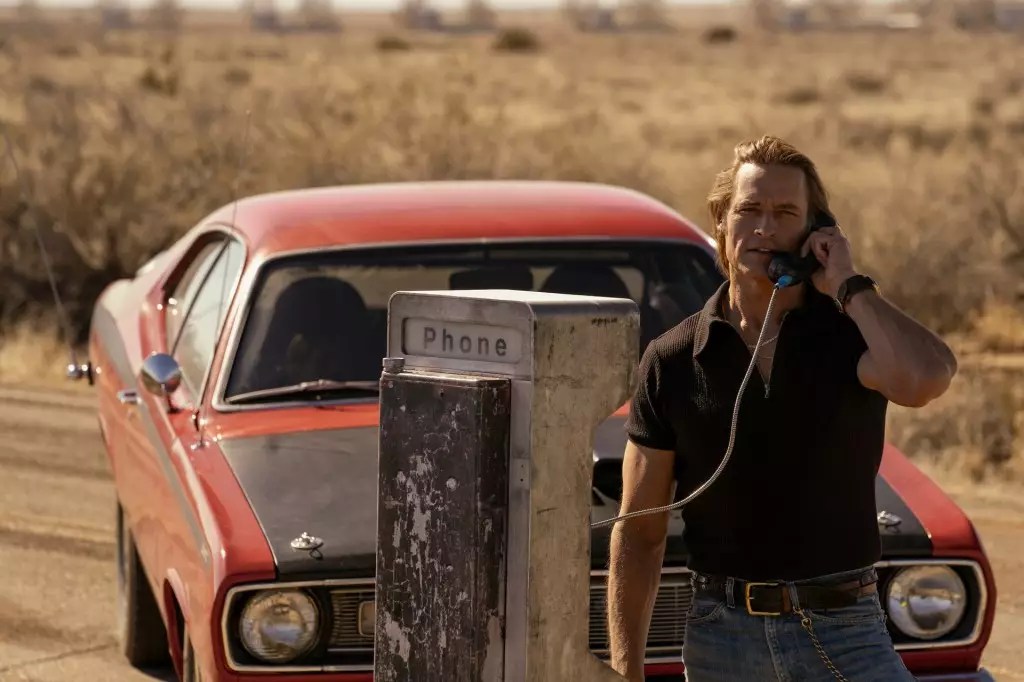The much-anticipated crime drama *Duster*, crafted by visionary creator J.J. Abrams and LaToya Morgan, entered the streaming world amidst great expectations. With a five-year build-up, a star-studded cast led by Josh Holloway, and a setting rooted deep in 1970s Americana, fans and critics alike anticipated a compelling series that would carve a niche in the crowded streaming landscape. However, despite the promising premise—centered around a pioneering Black FBI agent and a daring getaway driver—*Duster* couldn’t sustain momentum beyond its initial episodes. This disconnect raises questions about the genre’s allure in today’s streaming age and whether even promising narratives can struggle to find a foothold.
The series’ modest critical acclaim—92% on Rotten Tomatoes among critics and 83% among audiences—highlighted its quality and storytelling potential, yet it failed to translate into robust viewer engagement. It lingered on HBO Max’s daily Top 10 list, a notable achievement, but struggled to penetrate more decisive metrics like Nielsen’s Top 10 streaming charts. This suggests that while a select group appreciated *Duster*, it lacked the mass appeal needed to thrive in an environment increasingly driven by broad-based viewer numbers.
Content vs. Context: Why Quality Isn’t Enough
One of the core issues behind *Duster*’s quiet demise might lie in the challenge of balancing quality with discoverability. Excellent production, layered characters, and a fresh take on 1970s crime storytelling don’t inherently guarantee sustained viewership. In many ways, *Duster* epitomizes the modern paradox of high-quality content that fails to resonate beyond niche audiences. While critics praised its textured portrayal and innovative approach, these elements didn’t significantly hook the average viewer, who increasingly makes choices based on instant gratification and social buzz rather than nuanced storytelling.
Moreover, the series faced stiff competition within the streaming environment. With an overflowing library of engaging content across platforms, audiences are selective and tend to favor shows that generate immediate social media discussions or have hit a visceral nerve. Despite its critical praise, *Duster* lacked that viral spark—a single standout scene or character moment—that often propels lesser-rated shows into broader awareness. It’s evident that quality alone can’t override the importance of strategic marketing, timing, and audience engagement.
Structural and Strategic Hurdles
Examining the behind-the-scenes realities, the timing of *Duster*’s release and its production lifecycle played significant roles in its limited impact. Originally ordered during the pandemic in April 2020, the show’s filming concluded quite some time before its release, leading to a disjointed promotional cycle and possibly diminished momentum. Additionally, contracts and cast options had expired, hinting at an uncertain future from the outset. These logistical constraints inevitably hampered the series’ ability to capitalize on ongoing interest and momentum.
The fact that Warner Bros. and Bad Robot shopped *Duster* to other platforms after HBO Max decided not to extend it suggests an acknowledgment of its potential. Yet, opportunities to reposition *Duster* elsewhere—perhaps on a platform with a more suitable audience for gritty 1970s crime dramas—remained unfruitful. This indicates that even well-resourced studios recognize the importance of matching content to viewers’ preferences, and failing to find a proper home or marketing strategy can doom a series despite its inherent quality.
The Broader Implication for Streaming Content
The downfall of *Duster* exemplifies the harsh reality of modern streaming: high-quality content isn’t enough. As the market becomes ever more saturated, shows must engage viewers quickly and maintain visibility amid countless competing titles. Success now depends on a perfect storm of compelling storytelling, savvy marketing, platform alignment, and timing. For creators and studios, this underscores the importance of not only crafting good stories but also understanding the ecosystem into which they’re released.
Furthermore, *Duster*’s story presents a cautionary tale about the risks of over-investment in lengthy development cycles without parallel attention to audience engagement strategies. Despite its critical acclaim, the series’ failure highlights how the industry increasingly values immediate, widespread appeal over artistic merit alone. The decision not to proceed with a second season reflects a strategic recalibration within HBO Max and Warner Bros., where viewership numbers outweigh critical praise when it comes to renewal decisions.
In essence, the fate of *Duster* underscores the brutal new economy of streaming entertainment—one where even a well-made, promising series must fight tooth and nail to survive, let alone thrive. It’s a vivid reminder that in the world of digital content, success isn’t just about making great shows; it’s about making sure they are seen, understood, and embraced by the right audience at the right moment.
